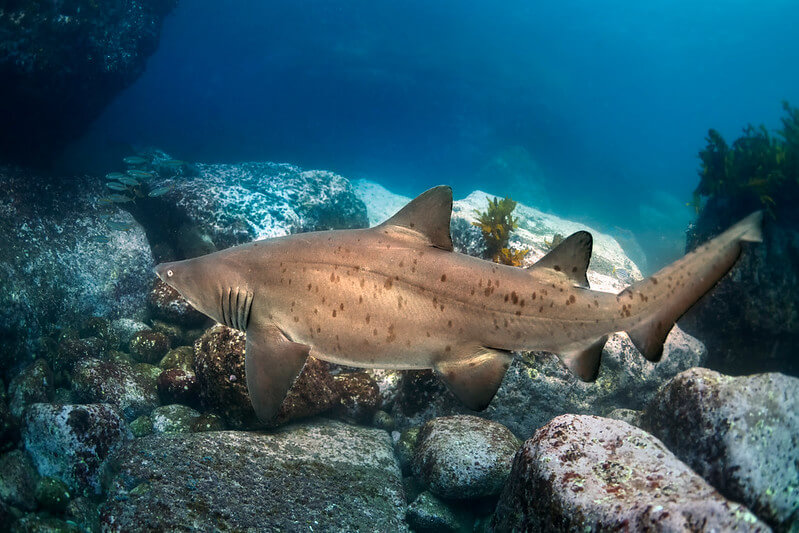Why are sharks important?
If too many sharks are removed from an ecosystem, it can upset the balance between predators and prey all the way through the food chain. Research has shown that healthy shark populations are crucial to the health of coral reefs (7,8). Further research also shows that sharks may even help us combat climate change by preventing seagrasses, an important carbon store, from being overgrazed by animals like dugongs (9,10).
Australia is a shark and ray hotspot, home to one quarter of the world’s known species. Of the 331 species that cruise our waters, almost half (41%) are endemic – that is, they’re found nowhere else on earth! (11) Sharks and rays are particularly vulnerable to fishing pressure because, like us humans, they mature slowly, give birth to few young and are long-lived. On average, they mature at 10 years old, have reproductive cycles of 1-2 years and produce 4-6 pups at a time (12). In short, their populations take a long time to recover from over-exploitation.
One in eight species of shark and ray in Australian waters are threatened with extinction, primarily because of overfishing (13). Sharks have been on earth for around 450 million years surviving five mass extinction events, but will they survive us? We are their biggest threat, and their only hope.

How can sharks be saved?
With your support, here’s some of the recent big wins we’ve had to help save sharks and rays:
- We stopped the WA shark cull in 2015
- In 2021, we reduced the shark quota by 100 tonnes in Queensland (including within the Great Barrier Reef), saving an estimated 20,000 sharks annually.
- In 2023, Ewe ensured that sharks and rays caught for food in Australian fisheries are brought back to port in one piece with their fins on, stamping out illegal shark finning.
- In 2024 we secured 11,600 sq.km of gillnet free areas in the Queensland Gulf of Carpentaria, giving a huge boost to sawfish protection and recovery efforts.
- In 2024, we secured protection of all hammerhead species from fishing in Queensland, and the protection of endangered endemic sharks and rays in South Australia.
But we still have a long way to go. We are currently focusing on:
- Ensuring Australia’s living dinosaur, the Maugean skate, does not go extinct because of intensive salmon farming in Macquarie Harbour, Tasmania.
- Protecting and helping one of the world’s most endangered and iconic fish, the sawfish, recover in number across northern Australia.
- Ensuring Australia’s most threatened and unique species of shark and ray are protected under Australian law.
- Working with communities and organisations to end shark culling around Australia